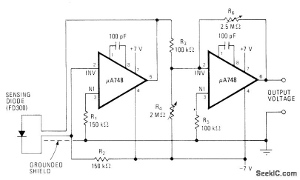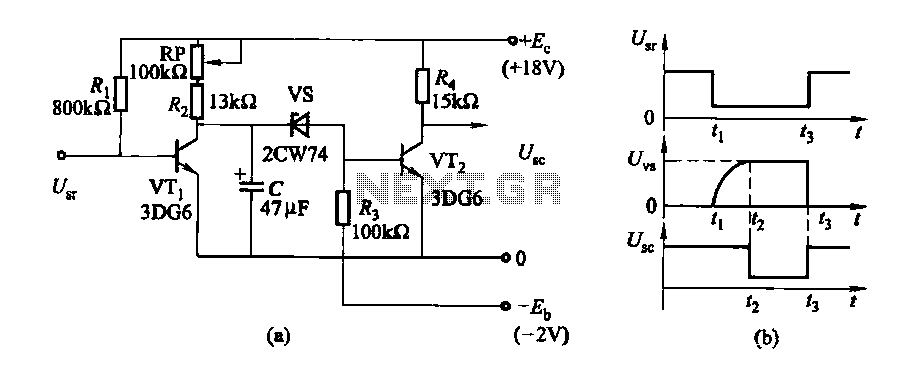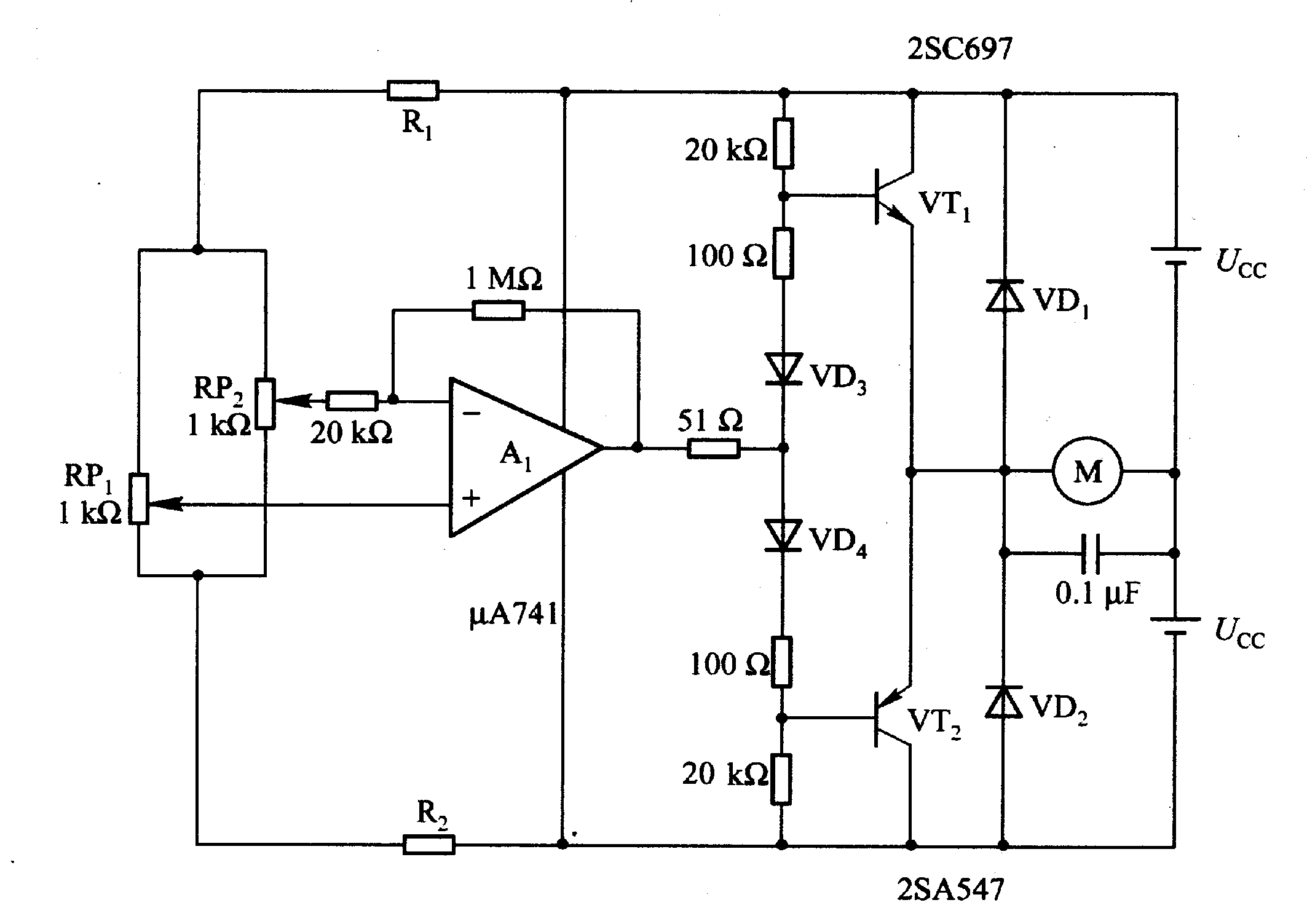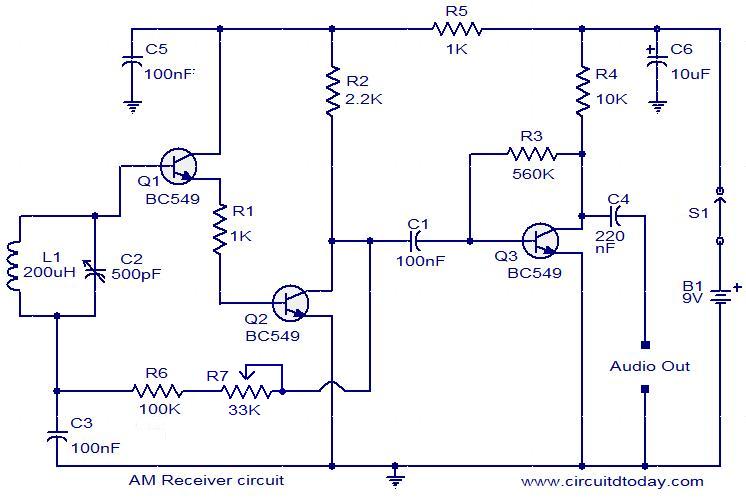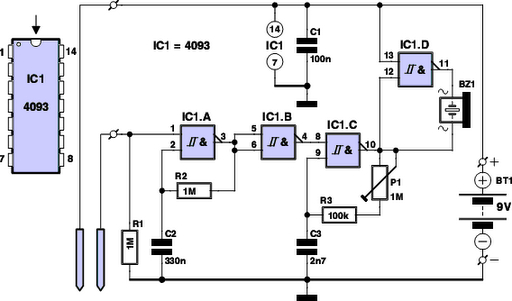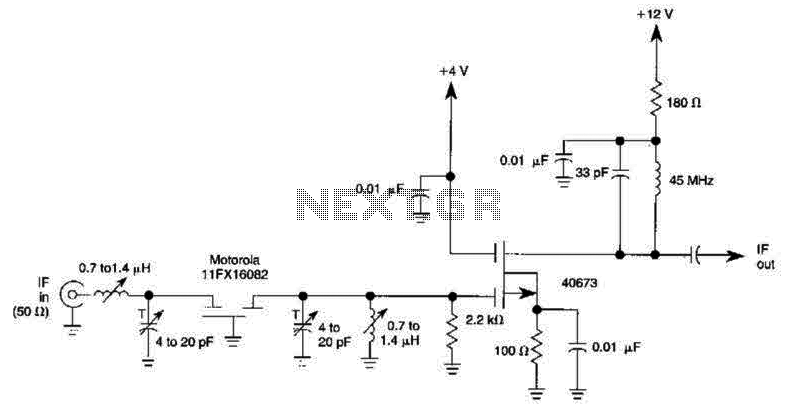
One second Audible Clock Circuit Schematic

This precise one-pulse-per-second clock is constructed using a few common components and is powered by a 50 or 60 Hertz mains supply without any direct connection to it. A beep or metronome-like click, along with a visible flash, indicates the one-second interval, making it useful for various applications requiring time-delay counting in seconds. The circuit utilizes a CMOS 4024 counter/divider chip and three diodes configured to divide the frequency of the input signal at pin #1 by 50 (or 60, depending on the frequency). The input impedance at pin #1 is very high, allowing simple contact with the pin or a short wire connected to it to provide the necessary input signal. An alternative method for generating the input signal is to wrap a piece of wire several times around any suitable mains cable or transformer. No additional connections are required. To ensure precise operation in areas where the mains supply frequency is rated at 60Hz, the circuit must be modified by disconnecting the cathode of D1 from pin #11 of IC1 and connecting it to pin #9 instead. Additionally, a further 1N4148 diode should be added, with its anode connected to R1 and its cathode connected to pin #6 of IC1. The visual display, consisting of D4 and R3, is optional. It is important to note that the value of R3 listed in the parts list is appropriate for low battery voltages; if 9V or higher voltages are used, its value should be changed to 1K.
The circuit design features a CMOS 4024 chip, which serves as a counter and frequency divider, enabling the generation of a precise one-second pulse. The high input impedance at pin #1 allows for easy signal detection, ensuring that the circuit can operate effectively without complicated setups. The use of diodes in the configuration is crucial for controlling the flow of current and ensuring that the correct frequency division occurs. The modification for 60Hz operation illustrates the adaptability of the circuit to different mains frequencies, enhancing its versatility in various geographical locations.
The optional visual display provides an additional method for users to confirm the timing of the pulses visually. The choice of resistor R3 is critical; it must be selected based on the supply voltage to ensure the proper functioning of the LED without risking damage to the components. This circuit is ideal for applications in timing, metering, and other electronic devices where accurate timing signals are essential. Overall, the simplicity of the design, combined with the effectiveness of the components used, makes this one-pulse-per-second clock a practical solution for a range of electronic timing applications.This accurate one-pulse-per-second clock is made with a few common parts and driven from a 50 or 60 Hertz mains supply but with no direct connection to it. A beep or metronome-like click and/or a visible flash, will beat the one-second time and can be useful in many applications in which some sort of time-delay counting in seconds is desirable.
Th e circuit is formed by a CMos 4024 counter/divider chip and 3 diodes, arranged to divide the frequency of the input signal at pin #1 by 50 (or 60, see Notes). The input impedance at pin #1 is very hight, so simply touching the pin (or a short track or piece of wire connected to it) is usually enough to provide the necessary input signal.
Another way to provide an input signal consists in a piece of wire wrapped several times around any convenient mains cable or transformer. No other connection is necessary. To allow precise circuit operation in places where the mains supply frequency is rated at 60Hz, the circuit must be modified as follows: disconnect the Cathode of D1 from pin #11 of IC1 and connect it to pin #9.
Add a further 1N4148 diode, connecting its Anode to R1 and the Cathode to pin #6 of IC1: that`s all! The visual display, formed by D4 and R3 is optional. Please note that R3 value shown in the Parts list is suited to low battery voltages. If 9V or higher voltages are used, change its value to 1K. 🔗 External reference
The circuit design features a CMOS 4024 chip, which serves as a counter and frequency divider, enabling the generation of a precise one-second pulse. The high input impedance at pin #1 allows for easy signal detection, ensuring that the circuit can operate effectively without complicated setups. The use of diodes in the configuration is crucial for controlling the flow of current and ensuring that the correct frequency division occurs. The modification for 60Hz operation illustrates the adaptability of the circuit to different mains frequencies, enhancing its versatility in various geographical locations.
The optional visual display provides an additional method for users to confirm the timing of the pulses visually. The choice of resistor R3 is critical; it must be selected based on the supply voltage to ensure the proper functioning of the LED without risking damage to the components. This circuit is ideal for applications in timing, metering, and other electronic devices where accurate timing signals are essential. Overall, the simplicity of the design, combined with the effectiveness of the components used, makes this one-pulse-per-second clock a practical solution for a range of electronic timing applications.This accurate one-pulse-per-second clock is made with a few common parts and driven from a 50 or 60 Hertz mains supply but with no direct connection to it. A beep or metronome-like click and/or a visible flash, will beat the one-second time and can be useful in many applications in which some sort of time-delay counting in seconds is desirable.
Th e circuit is formed by a CMos 4024 counter/divider chip and 3 diodes, arranged to divide the frequency of the input signal at pin #1 by 50 (or 60, see Notes). The input impedance at pin #1 is very hight, so simply touching the pin (or a short track or piece of wire connected to it) is usually enough to provide the necessary input signal.
Another way to provide an input signal consists in a piece of wire wrapped several times around any convenient mains cable or transformer. No other connection is necessary. To allow precise circuit operation in places where the mains supply frequency is rated at 60Hz, the circuit must be modified as follows: disconnect the Cathode of D1 from pin #11 of IC1 and connect it to pin #9.
Add a further 1N4148 diode, connecting its Anode to R1 and the Cathode to pin #6 of IC1: that`s all! The visual display, formed by D4 and R3 is optional. Please note that R3 value shown in the Parts list is suited to low battery voltages. If 9V or higher voltages are used, change its value to 1K. 🔗 External reference
